Everybody starts out backpacking as a beginner.
While experience is the best teacher, here are a few items to take along so that first backpacking or hiking trip is fun and doesn’t become an ordeal.
by Leon Pantenburg
We didn’t have enough water. My feet hurt in my combat boots, and they were developing blisters because my cotton socks never got dry. My all-cotton clothing got soggy from sweat, then chilly when the sun went down. The bugs swarmed around us and the corn pollen hung in a cloud.
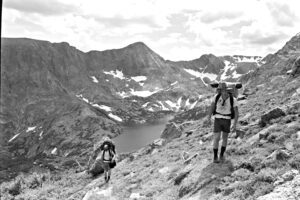
Rocky Mountain National Park, 1986. John Nerness and Michael Pantenburg along the Continental Divide.
The second day wasn’t much better. It was Iowa in August, 1971, I was on my first backpacking trip ever, and I didn’t know anything.
There is a lot to be said for hands-on experience, and there is no better way to learn. But there are a few items that the beginner can take along that will make things easier right off the bat.
Start with the Ten Essentials. This basic gear should be standard on any hike.
Then, based on my pattern of learning things the hard way, here are five additional things to take along to help shorten the learning curb.
Lightweight water filter: Water weighs in at about eight pounds per gallon, and the average person needs to drink about a gallon a day. This is during your normal day-to-day activities.
You will need a lot more water when hiking, and that amount can double if it’s hot, you’re at higher elevations and working hard.
That’s why a lightweight water filter is a necessity. While that mountain stream may look clear, cold and tantalizing, there may be an elk carcass across the stream just around the bend. Or a moose or bison may have just pooped in it. Take along a good unit and filter/purify whatever water you drink.
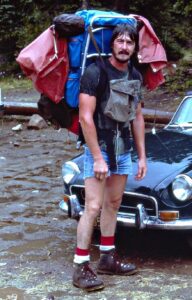
Unitas Mountains, Utah 1978. “Oh, the car can’t be that far, and I can get to it before the rain hits.”
Trowel: Speaking of poop – what will you do with yours? Some areas require it to be packed out. Take along several sturdy Ziplock plastic bags to carry it. Burying the stuff is easy with a lightweight trowel. But think about how you will handle the waste before you go. (Dad joke…)
Mobile phone with maps ap: There is probably not going to be any internet in the wilderness, so download any area maps before you go. You beginners will be spared my standard rant about the danger of depending on electronic devices in wilderness areas. Any electronic device is as reliable as the batteries that power it. Learn how to use a map and compass! (Check out this cell phone survival myth and DON’T DO IT!)
External battery pack: I don’t carry standard batteries much any more. I’ve gone to rechargeables whenever possible. Get a lightweight battery pack that can recharge your phone or other electronic gear. Also, consider a lightweight solar charger for your batteries. If the sun is out, you’ll never run out of power.

Quality wool socks are an investment that can help you avoid blisters and sore feet.
Wool socks: I wear wool socks year round and wouldn’t go hiking without them. They breathe and don’t retain much moisture.
Wool is warm when wet. Cotton gets wet and stays soggy, and sucks the heat away from your skin, leaving your feet cold, wet and soft. Soft, wet feet are prime candidates for blisters. (Learn how to choose the right socks.)
This isn’t even a bare bones list of things you need for hiking. Talk to experienced hikers, read and research before you take off.
The idea is to enjoy yourself outdoors – have fun!
Please click here to check out and subscribe to the SurvivalCommonSense.com YouTube channel – thanks!

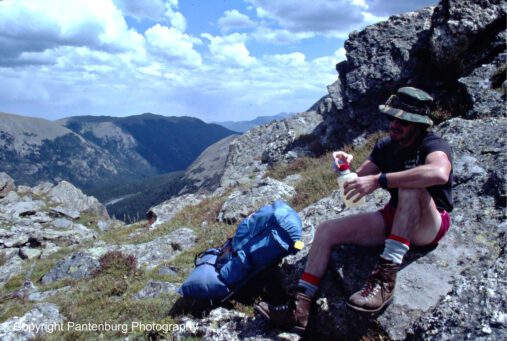

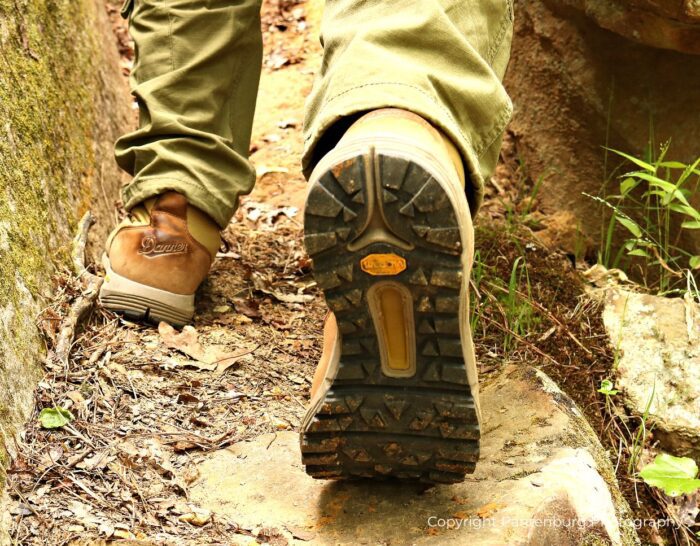
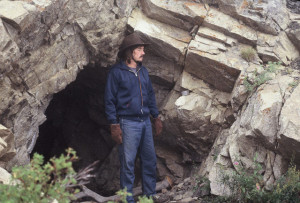
Leave a Reply